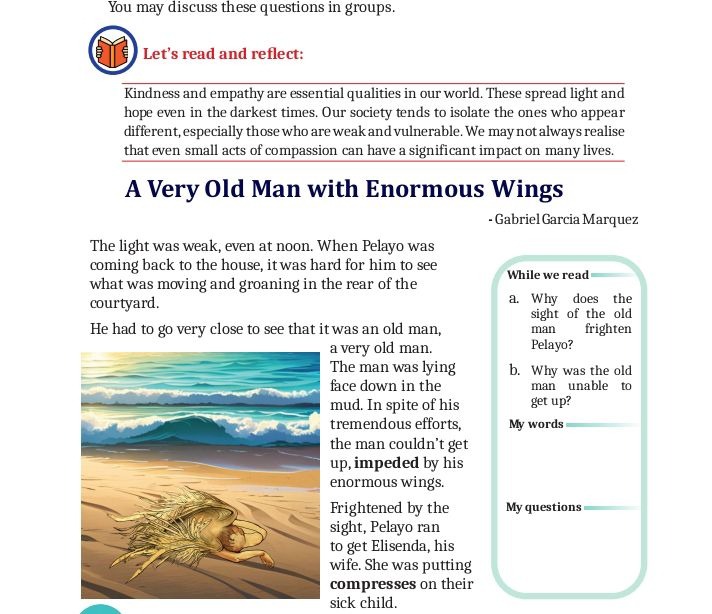Study Notes on To a Skylark by Percy Bysshe Shelley
Study Notes on To a Skylark by Percy Bysshe Shelley
Introduction
"To a Skylark" is one of Percy Bysshe Shelley's greatest lyric poems, written in 1820 and published in 1821 in his collection Prometheus Unbound, with Other Poems. The poem was inspired by a real skylark Shelley observed while in Italy, but it transforms the bird into an eternal symbol of beauty, freedom, and poetic inspiration. Through this poem, Shelley praises the skylark’s pure, spontaneous joy while lamenting human sorrow and the limitations of earthly existence.
Poem Summary
The poem consists of 21 stanzas, each with five lines following the rhyme scheme ABABB. Shelley directly addresses the skylark, calling it a "blithe Spirit" rather than a mere bird. He marvels at its ability to soar high in the sky while singing a melody that seems divine. He compares its song to various natural and artistic phenomena, such as the light of the stars, the fragrance of flowers, and the beauty of poetry.
However, Shelley contrasts the skylark’s absolute joy with human emotions, which are always tinged with sorrow. He acknowledges that even the happiest human moments are overshadowed by pain, regret, or unfulfilled desires. In the final stanzas, Shelley pleads with the skylark to teach him its secret of pure happiness so that he can infuse his poetry with the same divine ecstasy.
Major Themes
1. The Skylark as a Symbol of Transcendence
The skylark is not just a bird but a "blithe Spirit," an almost supernatural presence.
It exists beyond the struggles of the material world, soaring freely and singing without care.
Shelley uses the skylark as a metaphor for divine inspiration, poetic genius, and uncorrupted beauty.
2. The Contrast Between Human Sorrow and the Skylark’s Joy
Unlike humans, the skylark experiences pure, uninterrupted happiness.
Human joy is always mixed with pain, fear, and regret—a fact Shelley mourns in the poem.
The poet suggests that human knowledge and experience bring suffering, while the skylark’s ignorance of such burdens allows it to remain blissful.
3. The Power and Limitations of Art and Poetry
The skylark’s song is spontaneous, unfiltered, and superior to any human art.
Shelley, a poet himself, feels inadequate in comparison—his poetry can never match the skylark’s effortless beauty.
However, he wishes to learn from the skylark’s "harmonious madness" to enrich his own poetic voice.
4. The Search for an Unattainable Ideal
The skylark represents perfection—an ideal beyond human grasp.
It is compared to the moon, stars, and fragrant flowers, all of which provide joy but remain distant or fleeting.
Shelley’s longing to understand and achieve the skylark’s joy reflects the Romantic ideal of striving for something beyond reach.
Imagery and Literary Devices
1. Vivid Natural Imagery
Shelley uses rich descriptions to bring the skylark’s song to life:
Light imagery: “Like a star of Heaven” – emphasizes the skylark’s celestial nature.
Floral imagery: “Like a rose embowered” – compares its song to a hidden, intoxicating scent.
Water imagery: “Like a glow-worm golden” – suggests the skylark’s song is a hidden yet radiant presence.
2. Similes and Metaphors
Shelley compares the skylark’s song to various natural and artistic elements:
“Like an unbodied joy whose race is just begun” – suggests the bird’s song is eternal and untouched by suffering.
“Like a poet hidden in the light of thought” – compares the skylark to a poet who creates beauty from solitude.
“Like a high-born maiden in a palace-tower” – likens its song to a maiden singing in seclusion, untouched by worldly woes.
3. Apostrophe (Direct Address)
The entire poem is an apostrophe, meaning the speaker directly addresses the skylark. This heightens the sense of admiration and longing, as if the bird is a divine being that might respond to the poet’s pleas.
4. Repetition and Exclamations
The frequent use of “Hail to thee, blithe Spirit!” creates a celebratory tone.
Exclamations like “Teach me half the gladness” emphasize Shelley’s desperation to understand the skylark’s joy.
Structure and Rhyme Scheme
The poem consists of 21 stanzas, each with five lines. The rhyme scheme follows ABABB, creating a musical, flowing quality that mimics the skylark’s continuous song. The meter is mostly trochaic and anapestic, adding to the poem’s lyrical and rhythmic nature.
Interpretation and Significance
1. A Reflection of Romantic Ideals
Shelley, a leading Romantic poet, was fascinated by nature, beauty, and the search for higher truths. The skylark embodies Romantic transcendence—a symbol of pure inspiration, untouched by human suffering.
2. A Commentary on Human Limitations
The poem expresses both admiration and frustration—Shelley is in awe of the skylark’s joy, yet painfully aware that humans can never achieve such bliss. This reflects a broader Romantic theme: the pursuit of an ideal that remains just beyond reach.
3. Influence on Later Poets
"To a Skylark" influenced poets like John Keats, Alfred Lord Tennyson, and William Wordsworth, all of whom explored the contrast between nature’s purity and human sorrow.
Conclusion
"To a Skylark" is a profound meditation on the contrast between the skylark’s eternal joy and human suffering and longing. Shelley elevates the skylark to a divine status, using it as a metaphor for poetic inspiration, artistic idealism, and the unattainable pursuit of happiness.
Despite its lyrical beauty, the poem carries a deep melancholy—Shelley recognizes that human nature, bound by sorrow and imperfection, can never reach the pure, untroubled bliss that the skylark represents. This tension between idealism and reality is what makes To a Skylark one of the most celebrated works of Romantic poetry.




Comments
Post a Comment
Please share your feedback and questions